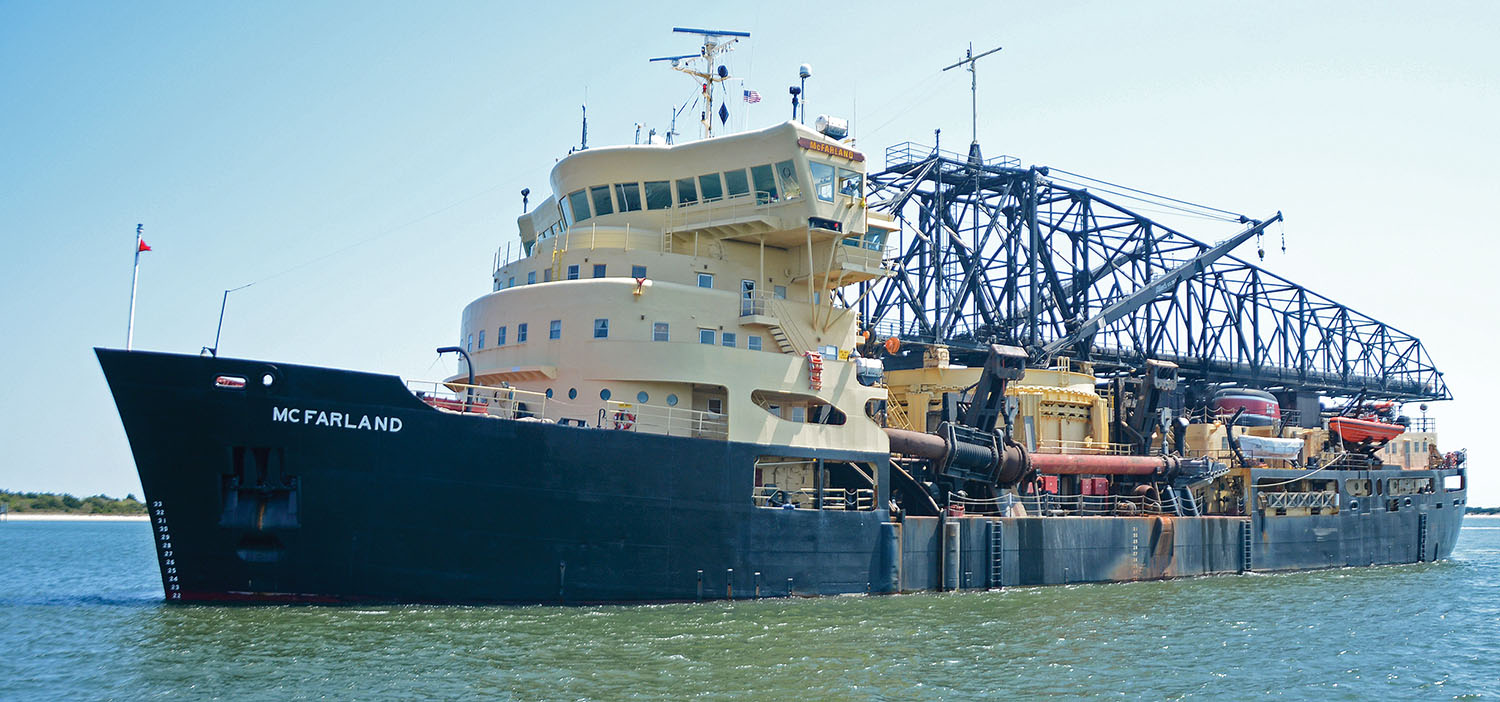The Philadelphia Engineer District is gearing up to solicit bids for a medium class hopper dredge (MCHD) to replace the dredge McFarland, part of the U.S. Army Corps of Engineers’ minimum fleet and ready reserve fleet of dredges.
The Corps released its draft solicitation documents for the project on January 25, with a virtual industry day following soon thereafter in early February.
“The government held its industry day on February 3, 2022,” the Corps said in a statement. “It was well attended by private industry, and the government also completed the draft solicitation period in support of this effort shortly thereafter. Feedback from both events was well received and helped inform the overall approach. At this time, the government is preparing to issue its solicitation targeting May 2022 or sooner.”
The project code is W912BU, and the targeted budget for the contract is $125 million.
The Corps’ minimum fleet of hopper dredges includes the Essayons, the Yaquina, the Wheeler and the McFarland. The Wheeler and the McFarland comprise the Corps’ ready reserve fleet used “for national defense, for emergency needs and for contract work when private industry has failed to submit a responsive and responsible contract bid,” according to the draft solicitation document.
The McFarland’s typical area of responsibility ranges from the Delaware River and Bay, near its home port, along the East Coast and along the Gulf Coast, including the Southwest Pass of the Mississippi River. According to its ready reserve mission, the McFarland is expected to be able to respond to any critical dredging need within 72 hours. According to the solicitation packet, the McFarland’s average ready reserve deployment has been about 60 days per year.
According to the Corps’ Marine Design Center, the new dredge will have a hopper capacity of 6,000 cubic yards and feature azimuthing thrusters and a diesel-electric power system.
Other required specifications include an overall length of 320 feet or less, a maximum air draft of 110 feetand a loaded draft of 26 feet. The dredge must have sufficient fuel and supply storage to allow an uninterrupted transit between Philadelphia and the New Orleans area at a transit speed of 12 knots. The dredge will also have to be able to work for a minimum of 18 calendar days without taking on supplies or offloading waste.
The replacement vessel will be able to discharge using bottom dumping via hopper doors and over the bow pump out through floating hose and pipeline to disposal sites.
From the notice to proceed date, the draft solicitation allows 1,380 calendar days (or about two months short of four years) from the planning phase to delivery.
Regardless of what shipyard builds the new dredge or what it’s named, the forthcoming hopper dredge, if it’s anything like the McFarland, will leave its mark on the nation’s coastline and waterways for decades.
Caption for photo: Corps of Engineers photo of the dredge McFarland.




